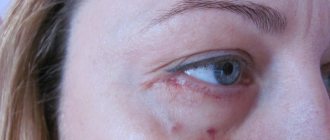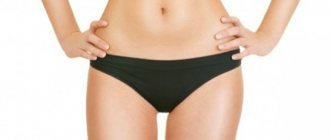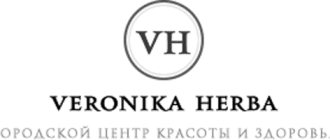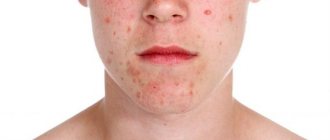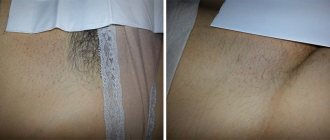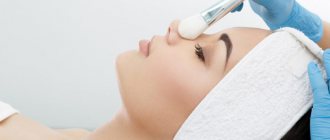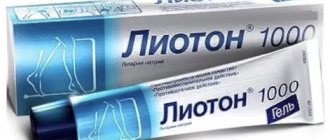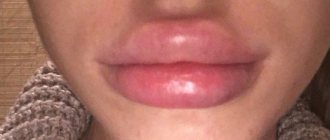Excision of facial scars is represented by plastic surgery measures aimed at eliminating a cosmetic defect using various techniques, the choice of which depends on its characteristics and area of location. The scar itself is a dense connective formation formed during the process of tissue regeneration after:
- surgical intervention;
- skin damage;
- inflammatory processes;
- ulcerative lesions.
It is mainly composed of fibrillar protein, which forms the basis of the connective tissue of the human body and is known as collagen. It is visually different from the tissues it replaces and is not as functional. They resort to removing scars on the face and body because they stand out against the background of healthy skin and spoil the appearance, often being a source of complexes and psychological problems.
Excision of scars (keloid, atrophic) - on the face (1cm) - 14,000 rubles.
Excision of scars (keloid, atrophic) - on the body (1cm) - 8,000 rubles.
Included in the price:
surgery, consultation with an anesthesiologist, anesthesia/anesthesia, hospital stay with meals, dressings, postoperative observation by the attending physician for a month.
1-3 days in hospital
Removal of scars on the face and body in Moscow
Modern plastic surgery offers effective techniques for removing scars on the body and face. You can order services in this area at the plastic surgery department of CELT.
We employ specialists with decades of experience. They have mastered excision techniques and consistently achieve excellent results, restoring beauty to patients. The process uses modern equipment and effective anesthesia drugs.
Particular attention is paid to diagnosis, which allows us to identify and eliminate contraindications and minimize the risk of complications. Our clinic is multidisciplinary and has its own laboratory and diagnostic department. If necessary, our patients can consult with highly specialized specialists in various fields.
To find out the price for removing scars on the face and body, go to the “Services and prices” tab in this section. It is calculated per 1 centimeter and will cost more on the face. To avoid misunderstandings, find out the exact numbers by contacting our operators.
Scars - symptoms and treatment
If the patient comes in at the time of injury, then for a scar of better quality, primary surgical treatment of the wound, excision of clearly non-viable tissue, and removal of foreign bodies to reduce contamination of the wound are important. The importance of a dressing appropriate to the type of wound cannot be overestimated [6]. Surgeons have been using both hydrogel and vacuum dressings for a long time and see their tremendous help.
Treatment of already formed scars should be based on the type of scar and its age. Treatment can be staged (and therefore long-term) and complex. In clinics where complex treatment of patients for aesthetic reasons is carried out, protocols for the rehabilitation and treatment of various types of scars are usually developed, so the patient after aesthetic surgery begins to work with a cosmetologist almost from the first day after the injury.
Surgical and conservative treatment is possible. Surgical involves excision of the scar, triangular or other type of plastic surgery. Sometimes it is enough to perform Limberg plastic surgery. The method is based on cutting out and mutual counter movement of two adjacent triangular flaps consisting of skin and subcutaneous fat. In this case, it is necessary to position the lines of the scar in greater accordance with the lines of skin tension in order to transform the scar from hypertrophic to long, but normotrophic, which does not cause concern.
Extensive scars can be successfully treated using the dermotension expander method, when an expander is placed under a nearby area of skin. The expander is a hollow silicone balloon, adapted for the gradual (over several weeks) introduction of saline into it. This leads to gradual dermotension (stretching) of the skin, which is subsequently used for skin grafting. In this way, in a few months you can get a large amount of skin identical in color and texture (for example, to cover the scalp).
Conservative methods may be controversial or supported by many years of research. Controversial methods include cryotherapy, radiation therapy, x-ray therapy for scars - they do not always give a good result. Sometimes their damaging effect is greater than can be predicted. Confirmed ones include injections of hormones, enzymes, plasma therapy, phonophoresis, etc. Research on cellular technologies, such as injections of stem cells or neofibroblasts, is of great value [13].
Also interesting are treatment methods using veropamil ointment, acemin, rubbing in vitamin E, and the use of cytokine preparations. It is advisable to develop these methods, as they can be effective and useful in identifying the processes occurring in the wound. But in practice, they can be difficult to apply due to the duration, labor-intensive or high cost of treatment.
Atrophic scars take a long time to treat, are difficult and may not give a clear aesthetic result. They use peelings, laser treatment, injections of collagen and hyaluronic acid, as well as darmabrasion - grinding off the surface of the epidermis. If dermabrasion is done very roughly, it can lead to the formation of new scars. Surgical methods include excision of an area of skin with stretch marks (after all, most often it is the abdomen with many stretch marks).
Normotrophic scars can be quite effectively treated with therapeutic methods to improve quality, for example, smearing with silicone gels and immoferase. These products will speed up the maturation of the scar and quickly turn it from red to white. In addition, a month after the injury, you can inject the scar with your own blood plasma or Spherogel, which will help make the scar as blurred as possible. If the scar is whiter than the surrounding skin, tattooing it is used with great success.
Hypertrophic scars respond well to treatment with injections of hormonal drugs, the use of hormonal ointments, and silicone gel applications, such as Kelo-Kot or Dermatix. The action of these drugs is based on the occlusive effect (moisture evaporation is blocked), scar hydration and reduction of collagen synthesis. Corticosteroid injections can help achieve rapid improvement in hypertrophic or keloid scars. Sometimes in practice, 1-2 injection procedures are needed to transform a hypertrophic scar into a normotrophic one. The keloid scar stops itching after the first procedure, which significantly alleviates the patient’s condition. The principle of action of corticosteroids is based on a powerful anti-inflammatory effect, inhibition of fibroblast division and increased activity of its own collagenase.
Injections of enzyme preparations such as hyaluronidase and longidase treat not only skin scars, but also deep cicatricial deformities such as Dupuytren's contracture. This is a scar degeneration of the palmar tendons, in which the fingers are bent towards the palm and their full extension is impossible.
Not only the injection will improve the condition of the hypertrophic scar, but also phonophoresis with these enzyme preparations, which increases the availability of treatment. Surgical treatment consists of triangular scar plastic surgery—reorientation of the scar line is performed so that its direction coincides with the skin tension lines.
ways to treat keloid scars , which means that there is no 100% effective method. Injection of hormones, such as Kenalog, significantly improves the quality of the scar and relieves itching. Pressotherapy in studies gives quite good results. This is constant pressure therapy, for example using an elastic pressure bandage. This can be done using compression garments or silicone plates. It was experimentally revealed that a pressure of 25 mm Hg. Art. for every centimeter of skin it compresses blood vessels, limits their growth and softens the scar, until it is completely smoothed out. Silicone plates dry the surface of the scar, extinguish pathological inflammation in the scar and also significantly alleviate the patient’s condition.
As with hypertrophic scars, good results can be expected from topical application of enzyme preparations (Fermenkol) or their injections into the scar tissue. It is not recommended to perform primary excision of a keloid scar. Otherwise, in response to inflammation, an even larger scar will grow at the site of the excised tissue. If a person has a state of homeostasis in which a keloid scar is formed in response to injury, it is logical to assume that by removing the existing keloid the doctor will cause a new injury greater than the previous one, which means with almost 100% probability the scar will also become keloid and involve some kind of amount of healthy skin. This type of scar requires careful attention; there should be no rush to treatment.
Preparation for scar excision surgery and its implementation
Since excision is a full-fledged operation (sometimes not an easy one), it requires complex preparation. In addition to attending a preliminary consultation and discussing the desired results with a plastic surgeon, the patient needs to undergo diagnostic tests:
- General blood and urine analysis;
- Electrocardiography;
- Test for an allergic reaction to anesthesia drugs;
- Tests for HIV and hepatitis.
It is important for the patient to understand that complete removal of the scar is impossible - it will still remain - however, it is within the power of the surgeon to make it almost invisible and reduce its size. Two weeks before surgery, you should avoid taking blood thinning medications, as well as smoking. If you plan to use general anesthesia, your last meal should be no later than ten hours before visiting the surgeon.
The surgical excision technique is selected individually, based on the following parameters:
- Indications and wishes of the patient;
- Features of the scar;
- Functional disorders caused by its presence;
- Scar location.
Depending on the volume, the intervention is performed under local or general anesthesia. The surgeon’s actions are aimed at recreating the incision and moving the skin around it in order to minimize tension. Removal is carried out by excision in such a way that the wound edges can be easily compared, after which a cosmetic suture is applied. It is removed after three to four days.
To make rehabilitation easier and the operation to give the best result, the patient is prescribed a number of procedures. After the operation, a thin seam remains on the skin, which is practically invisible.
Do you want the best result? Contact CELT! Our plastic surgeons have been successfully removing scars from burns, injuries, and surgeries for several years now.
What is scar correction?
A surgical or cosmetic method that allows you to smooth out or make less noticeable scars and cicatrices that have arisen as a result of operations, burns, incisions, ruptures, and skin diseases. Such defects are formed due to the replacement of elastin fibers with fibrous tissue. It is impossible to completely get rid of these defects, but you can significantly reduce their severity. As a result, scars and scars become almost invisible.
Correction of scars at the Kivach clinic
At the Kivach clinic, scar removal is carried out using two methods:
- surgical excision;
- laser removal.
The method is selected depending on the nature of the scar, its size and severity.
Plastic surgeons at the clinic recommend that you undergo the “Body Cleansing” program before surgery. This normalizes the physiological balance and minimizes possible risks of complications during surgery and during the recovery period.
After surgery, patients are offered comprehensive programs to accelerate the healing of postoperative wounds and reduce swelling. These programs can reduce the rehabilitation period by an average of 2 times.
Check out our programs
OPTIMUM for face
OPTIMUM for the body
PREMIUM for face
PREMIUM for body
Indications
- Post-acne (consequences of acne).
- Normotrophic, atrophic, hypertrophic, keloid scars.
- Postoperative, post-burn and post-traumatic scars.
- Stretch marks (striae).
- Uneven excess pigmentation (melasma).
results
- Elimination of post-acne. Smooth, even, well-groomed skin.
- Maximum camouflage of scars. The scars become almost invisible and imperceptible to the touch.
- Reducing the size and visibility of stretch marks.
- Alignment of the relief and shade of the skin area relative to the surrounding tissues.
About the operation
Operation duration:
depends on the complexity and size of the scar, varies from 20 to 40 minutes. The duration may be increased for medical reasons.
Duration of the rehabilitation period:
from several days to 2 weeks.
Effect:
becomes noticeable after 1-2 weeks; the final one can be assessed in 3-6 months.
Where is it used?
Consequences of acne on the face and body
The consequences of acne are eliminated. The relief and color of the skin are evened out.
Striae on the chest, abdomen, thighs
Stretch marks become less pronounced, some almost completely disappear.
Scars, scars on the body
The scar does not disappear completely, but becomes more neat, significantly reduced in size and acquires a color characteristic of healthy skin.
Scar removal technique
The method for correcting scars is selected individually, depending on their type, location and characteristics.
Surgical excision is preceded by a series of laboratory and instrumental studies.
Download our guide to find out what tests you need to complete.
No research is required for laser correction.
Laser removal of scars and scars (resurfacing)
The method is designed for “younger” scars and scars that do not affect the deeper layers of the skin. The laser correction procedure, as a rule, does not require prior anesthesia. In case of facial treatment or high sensitivity of the patient, local or topical anesthesia is used.
The treatment is carried out non-contactly with a laser beam, which is directed at the scar tissue using a tip. Under the influence of radiation, the surface layers of scar tissue evaporate. The laser acts in a targeted manner, so adjacent areas of the skin are not affected.
After 3-5 days after the operation, a dry crust will appear at the treatment site, which will disappear on its own after 7-14 days. During this period, you need to avoid direct sunlight and treat the affected area with a drug that has a healing effect.
Several sessions may be needed to achieve the desired effect.
Surgical excision of scars
The older and deeper the scar, the more difficult it is to remove. Surgical excision is used for large scars and scars that have “hooked” into the deep layers of the skin. This is the most effective way to get rid of such defects.
The operation is performed under local or general anesthesia - it depends on the size of the scar, its age and depth. Using a scalpel, the surgeon excises the scar and carefully stitches its edges.
After the tissue has healed, an almost invisible thin pale line remains at the site of the scar or scar. The final effect can be assessed after 6 months.
During the consultation, the clinic’s plastic surgeon will listen to your wishes, conduct an examination,, if necessary, prescribe additional studies and suggest correction methods that best suit you.
To get a consultation
Contraindications
- Diabetes mellitus in the stage of decompensation.
- Blood diseases, bleeding disorders.
- Epilepsy.
- Diseases in the area of planned impact - dermatitis, eczema, psoriasis, herpes, etc.
- Exacerbation of chronic diseases, acute inflammatory and infectious processes.
- The use of retinoids and photosensitizing drugs that increase sensitivity to ultraviolet radiation.
- Recent use of a chemical or other type of peeling.
- Pregnancy, lactation.
Question answer
- When can the result be assessed?
- 1. The result of scar correction using laser becomes noticeable after the first procedure. For small scars, 1 session is enough. In some cases, a course of up to 10 sessions may be required. It all depends on the depth, area and age of the scar.
2. As for surgical excision, the result can be assessed 3-6 months after surgery. This is exactly how long it will take to form a new, even, neat seam.
- What result should you expect?
- Scars decrease in size, become light and almost invisible.
The skin regeneration process starts.
- The skin texture is corrected.
- Foreign particles are removed.
- With the help of excision, the scar can be moved to an area hidden from view.
- Is the operation safe?
- The operation is relatively safe. Laser removal can be performed without anesthesia. Surgical excision, depending on the characteristics of the scar, is performed under local or general anesthesia (anesthesia).
- How to prepare for surgery?
- The scar must be formed. To do this, it is necessary that from 6 months to 1 year pass after its occurrence.
To correct scars with a laser, no special preparation is needed; Only a doctor's examination is carried out.
In the case of surgical excision, the patient undergoes an examination and takes tests prescribed by the doctor.
Important doctor's advice:
- 14 days before surgery, it is advisable to quit smoking and alcohol.
Before the operation - a hygienic shower.
- How long is the rehabilitation period?
- The recovery period is not long. With the surgical method, a cosmetic suture is applied, which resolves after 7-10 days. With the laser method, a crust forms at the treatment site, which will fall off on its own. The formation of new skin in the affected area lasts 2-3 months, depending on the individual characteristics of the body.
Important doctor's advice:
- For 3-4 days after the operation, do not allow water to enter (if the procedure was performed using a laser, this restriction can be ignored).
For 7 days after surgery, do not use cosmetics or care products in the affected area.
- Avoid UV rays for 2-3 weeks after surgery.
- Are there any complications?
- When removing scars and scars, complications rarely develop. Swelling, redness of the skin, and crust formation are possible. All unpleasant symptoms go away on their own after 7-10 days. To minimize the risk of complications, it is recommended to use the “Body Cleansing” program before surgery.
- What guarantees the success of the operation?
- Certified plastic surgeons.
- Compliance with medical standards.
- Completing the “Body Cleansing” program before surgery minimizes the risk of complications.
- Completing any of the comprehensive programs after surgery will shorten the rehabilitation period.
Unfortunately, it will not be possible to completely get rid of the scar, but instead of a rough scar, a barely noticeable, even and light-colored seam will remain.
The clinic's patients are offered comprehensive programs of restorative procedures that accelerate tissue regeneration. These procedures can shorten the rehabilitation period by an average of 2 times.
The cost of the operation does not include the cost of anesthesia
Correction of scars and scars
| Name of procedure | Cost of one procedure (RUB) |
| Correction (excision) of scars of 1st degree of complexity - up to 5 cm | 11 050 |
| Correction (excision) of scars of 1st degree of complexity - from 5 to 10 cm | 13 230 |
| Correction (excision) of scars of 1st degree of complexity - from 10 to 20 cm | 17 640 |
| Correction (excision) of scars of 1st degree of complexity - more than 20 cm | 22 050 |
| Correction (excision) of scars of 2nd degree of complexity - up to 5 cm | 27 650 |
| Correction (excision) of scars of 2 degrees of complexity - from 5 to 10 cm | 33 100 |
| Correction (excision) of scars of 2 degrees of complexity - from 10 to 20 cm | 38 650 |
| Correction (excision) of scars of 2nd degree of complexity - more than 20 cm | 44 100 |
| Absorbable therapy - with DIPROSPAN - 1 injection | 1 380 |
| Fermenkol | |


